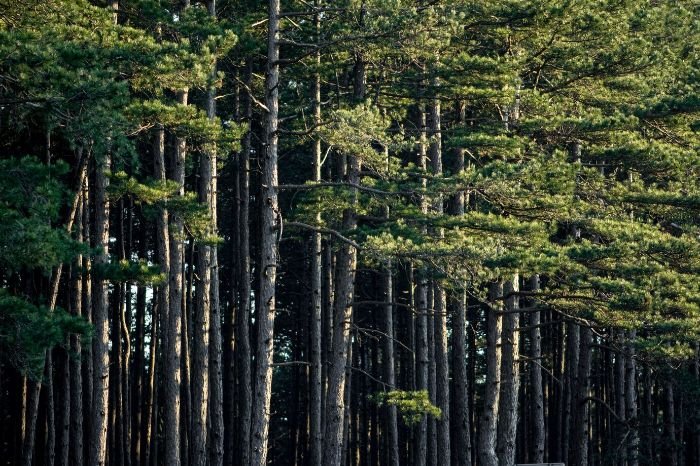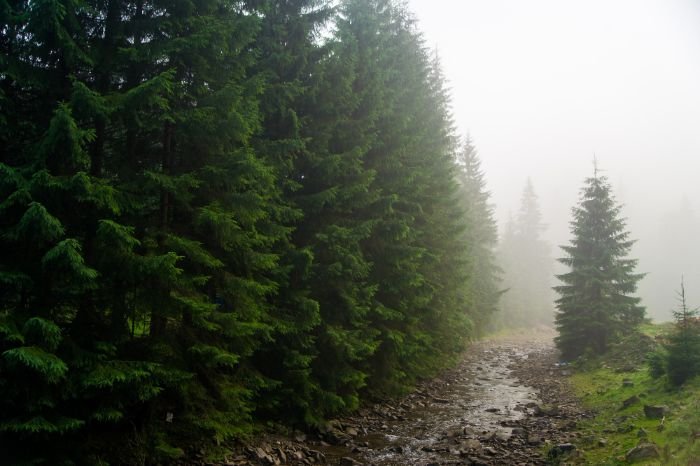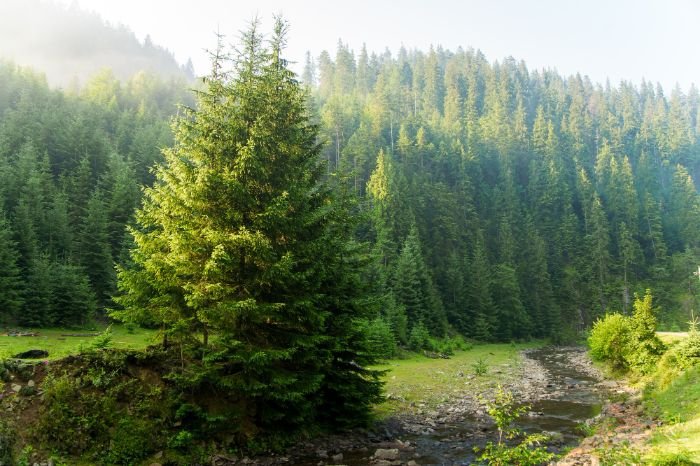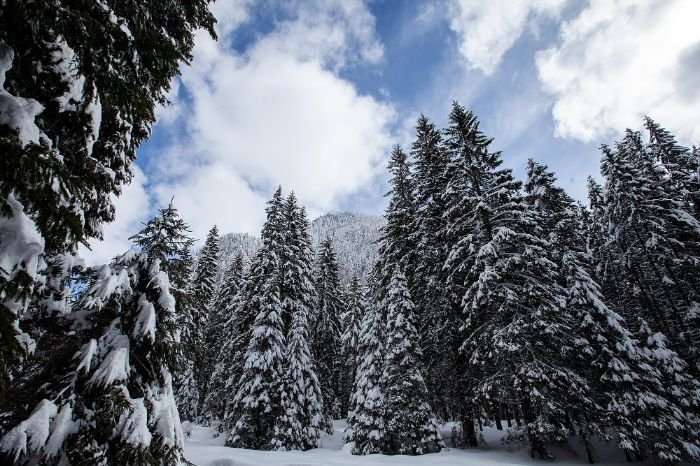Pine trees display substantial variation in structure, adaptation, and ecological function. Each species within the Pinus genus expresses distinct growth forms, needle configurations, and bark textures, influencing both their role in native habitats and their value in landscape design. Selecting appropriate pine species requires understanding these differentiating characteristics and their performance across climate zones, soil types, and site conditions. Effective use of pine trees in landscaping depends on matching species traits to intended horticultural outcomes and long-term environmental resilience.
Key Takeaways:
- The Pinus genus includes a wide range of pine species, each with specific needle arrangements, bark morphology, and growth patterns.
- Pine trees serve structural, ecological, and visual functions in landscape projects, supporting wind mitigation, year-round screening, and habitat enhancement.
- Successful pine species selection depends on site factors such as climate tolerance, soil compatibility, mature size, and resistance to regional pests or disease pressures.
- Different pine species demonstrate unique capacities for soil stabilization, shade creation, and microclimate regulation within managed landscapes.
- Integrating pines with other conifers or deciduous trees can expand design options and promote ecological diversity in both formal and naturalistic settings.
Table of Contents
Botanical Characteristics and Species Differentiation in Pine Trees
Pinus species reveal their evolutionary success through marked differences in morphology, adaptation, and life strategy. Examining needle arrangement, cone structure, bark type, and overall growth form provides insight into how each species performs in both native ecosystems and managed landscapes. Recognizing these features allows for informed decisions in tree selection and placement. Accurate understanding of pine morphology directly impacts site suitability, long-term health, and landscape performance.
Needle Configuration and Arrangement
Pine trees develop their needles in clusters known as fascicles, with each species exhibiting a specific pattern. Eastern White Pine produces needles in bundles of five, yielding a soft texture and fine visual effect. Scots Pine, in contrast, arranges its needles in pairs, creating a more rigid and upright display. Ponderosa Pine presents needles in groups of two or three, with longer, stout needles contributing to wind resistance and drought tolerance. The fascicle pattern not only aids in identification but also determines the tree’s adaptation to environmental stresses.
Bark Texture, Color, and Adaptive Function
Pine bark varies widely between species and developmental stages. Young Scots Pine trees exhibit thin, orange-brown bark that gradually thickens and fissures with age. Ponderosa Pine develops deeply furrowed, reddish bark plates with a resinous aroma, while Bristlecone Pine displays rough, silver-gray bark, enhancing its resistance to harsh mountain climates. Bark serves as both a protective layer against pests and fire and a diagnostic trait for species identification.
Cone Morphology and Seed Dispersal Strategy
Pine cones differ in size, scale rigidity, and maturation time among species. Lodgepole Pine produces small, slender cones that remain closed for years, only opening in response to wildfire heat, an adaptation for rapid post-disturbance regeneration. Eastern White Pine features elongated, flexible cones that release winged seeds for wind dispersal. The diversity in cone form reflects evolutionary pressures related to habitat, predation, and disturbance regimes.
Comparison Table – Select Pine Species Characteristics
| Species Name | Needle Arrangement | Bark Description | Cone Traits | Maximum Height (ft) |
|---|---|---|---|---|
| Eastern White Pine | 5 per fascicle | Smooth, gray, thickens | Long, slender, flexible | 80–150 |
| Scots Pine | 2 per fascicle | Orange-brown, fissured | Short, conical, woody | 60–100 |
| Ponderosa Pine | 2–3 per fascicle | Reddish, plated, aromatic | Large, stout, thick-scaled | 80–200 |
| Lodgepole Pine | 2 per fascicle | Thin, scaly | Small, serotinous (fire-adapted) | 70–100 |
| Bristlecone Pine | 5 per fascicle | Silver-gray, rough | Small, oval, persistent | 15–50 |
Growth Form and Adaptation to Site Conditions
Each pine species develops a characteristic growth habit. Eastern White Pine forms tall, upright trunks and open, layered crowns, making it suitable for large-scale screens or canopy shade. Bristlecone Pine exhibits slow growth with gnarled, irregular branching – a result of adaptation to high-elevation, low-nutrient sites. Lodgepole Pine adopts a narrow, columnar profile, thriving in dense stands after fire events. Understanding these forms allows landscape designers to match species with site constraints and desired landscape functions.

Species-level variation in pine trees reflects both evolutionary heritage and functional adaptation. Accurate identification and understanding of these traits enable informed landscape planning, supporting both ecological objectives and long-term landscape resilience.
Pine Species Selection for Diverse Landscape Functions
Matching pine species to specific landscape goals requires a nuanced evaluation of climate tolerance, soil preferences, mature size, and anticipated function within the site. Distinct traits such as drought resistance, needle configuration, growth habit, and disease resilience determine how each pine species functions as a windbreak, focal point, ground stabilizer, or ecological resource. Knowledge of these factors supports resilient and visually effective designs across a variety of garden and park settings.
Climate Adaptation and Site Suitability
Each pine species demonstrates unique thresholds for cold, heat, drought, and humidity. Eastern White Pine tolerates cold winters and moist, well-drained soils but suffers in urban heat and compacted ground. Ponderosa Pine endures hot, dry summers and alkaline soils, making it a preferred option for xeriscaping in western states. Bristlecone Pine withstands temperature extremes, drought, and wind in high-altitude sites, though its slow growth restricts use to specimen planting. Accurate climate and soil assessment prior to planting directly improves tree survival and long-term performance.
Functionality – Screening, Windbreaks, and Habitat Value
The dense foliage and tall stature of species like Scots Pine and Eastern White Pine provide effective year-round screens and wind barriers. Lodgepole Pine’s fast juvenile growth is advantageous for rapid site recovery following disturbance, while its upright form supports tight spacing in linear plantings. Bristlecone Pine and other slow-growing species contribute as focal elements, introducing textural contrast and supporting native pollinators and wildlife.
Pine Species and Preferred Landscape Uses
| Species Name | Drought Tolerance | Urban Tolerance | Optimal Use | Notes |
|---|---|---|---|---|
| Eastern White Pine | Moderate | Low | Shade, screening, large sites | Sensitive to road salt |
| Scots Pine | Moderate | High | Windbreak, screening, parks | Adaptable, quick to establish |
| Ponderosa Pine | High | Moderate | Dry gardens, large landscapes | Tolerates poor soils |
| Lodgepole Pine | Moderate | Moderate | Restoration, narrow screens | Effective in mass plantings |
| Bristlecone Pine | High | Low | Specimen, high-elevation | Extremely slow-growing |
Design Integration – Combining Pines with Other Plant Types
Integrating pine trees with deciduous species, shrubs, or ornamental grasses introduces seasonal interest and ecological complexity. Pines with open crowns, such as Eastern White Pine, permit understory planting and layered designs. Species with dense, low branches excel in boundary plantings where visual screening is a primary goal. Site design that leverages the structural diversity of different pines increases habitat value, supports pollinator corridors, and buffers against weather extremes.
Informed species selection underpins both the visual impact and ecological function of pine-based landscapes. Understanding the performance profile of each pine species streamlines site planning, ensures plant health, and produces lasting landscape value.
Soil Stabilization, Erosion Control, and Environmental Impact of Pine Trees
Pine trees serve as effective agents for soil retention, landscape restoration, and ecological balance across a spectrum of site conditions. Their root systems, litter dynamics, and physiological adaptation contribute to improved slope stability, water retention, and biodiversity support. Detailed evaluation of these mechanisms guides site rehabilitation and the long-term sustainability of both private and public landscapes.
Root Architecture and Soil Retention
Most pine species develop extensive lateral and tap root systems. Eastern White Pine anchors well in deep, well-drained soils, limiting surface runoff and preventing soil loss on gentle slopes. Lodgepole Pine produces a fibrous, shallow root network, well suited to stabilizing sandy or disturbed soils but less effective in exposed, high-wind environments. Ponderosa Pine develops deep taproots, enabling firm anchorage on erodible hillsides and access to subsoil moisture during dry periods. Selection based on root type directly influences slope protection and soil stability outcomes.
Pine Needle Litter, Mulching Effect, and Soil Fertility
Fallen pine needles form a persistent, slow-decomposing mulch layer. This organic cover reduces raindrop impact, limits surface evaporation, and suppresses weed establishment. Over time, the decomposition of needles increases soil organic matter and supports beneficial microbial activity, particularly in acidic and sandy soils. Mulch thickness, species-specific needle chemistry, and site hydrology collectively determine the effectiveness of pine litter in regulating soil health.

Habitat Enhancement and Ecosystem Services
Pine groves provide microhabitats for fungi, invertebrates, and small vertebrates. The physical structure of multi-aged pine stands improves infiltration rates and buffers against localized flooding. Bristlecone Pine forests support specialized alpine organisms, while mixed-age stands of Scots Pine or Eastern White Pine deliver diverse foraging and nesting sites for birds and mammals. The capacity of pines to influence both abiotic and biotic site factors strengthens the resilience and ecological value of managed landscapes.
Pine trees contribute measurable benefits to landscape stability, hydrological balance, and habitat structure. Strategic placement and management of pine species in sensitive or degraded sites accelerate restoration, protect topsoil, and support long-term ecological health.
Pest Resistance, Disease Vulnerabilities, and Management in Pine Trees
Long-term health and performance of pine trees depend on genetic resistance, site selection, and proactive management. Each species demonstrates unique vulnerabilities to insects, fungal pathogens, and abiotic stressors. Accurate diagnosis, monitoring, and targeted intervention directly minimize loss and sustain landscape integrity.
Insect Pressures and Species-Specific Resistance
Pine beetles, sawflies, aphids, and scale insects present primary threats to many Pinus species. Scots Pine demonstrates moderate resistance to pine beetle infestation but remains susceptible to pine sawfly outbreaks, which can cause severe defoliation in young stands. Eastern White Pine is often targeted by white pine weevil and pine needle scale, both of which can disrupt leader growth and reduce visual quality. Ponderosa Pine’s thick bark and resin canals provide partial defense against bark beetles but do not eliminate the risk under drought or stress conditions.
Fungal Pathogens and Environmental Factors
Fungal diseases affect pine health in diverse climates. Pine wilt reduces vascular function, needle cast causes defoliation, and root rot impairs nutrient uptake. Lodgepole Pine exhibits susceptibility to western gall rust and needle cast, leading to reduced vigor and dieback. Bristlecone Pine tolerates many pathogens due to slow growth and dense wood, but wet conditions and poor drainage increase the risk of root rot even in resilient species. Species selection for known resistance, paired with drainage management, lowers the incidence of disease outbreaks.
Comparison Table – Common Pests, Diseases, and Susceptibility by Pine Species
| Species Name | Key Insect Threats | Fungal Disease Susceptibility | Notable Tolerances |
|---|---|---|---|
| Eastern White Pine | Weevils, needle scale | Blister rust, needle cast | Some resistance to drought |
| Scots Pine | Sawflies, aphids | Pine wilt, root rot | Tolerates urban stress |
| Ponderosa Pine | Bark beetles, scale | Diplodia tip blight | Thick bark, drought hardy |
| Lodgepole Pine | Pine beetles, sawflies | Needle cast, gall rust | Fast recovery after fire |
| Bristlecone Pine | Aphids, minimal insect load | Root rot (in wet sites) | High disease resistance |
Integrated Management and Preventive Strategies
Maintaining pine tree health relies on integrated pest management (IPM). Key practices include selecting disease-resistant cultivars, monitoring for early pest activity, and applying targeted biological or chemical controls only when thresholds are exceeded. Adequate spacing, regular sanitation (removal of infested or diseased material), and site-appropriate irrigation reduce both pest pressure and pathogen spread. In public and private landscapes, collaboration with local arborists or extension specialists increases the effectiveness of intervention and supports long-term resilience.

Understanding pest and disease dynamics for each pine species supports robust site management and landscape sustainability. Proactive, evidence-based interventions prevent decline and maintain the ecological and visual contributions of pines in any environment.
Integrating Pines in Landscape Design – Aesthetic and Functional Roles
Effective use of pine trees transforms both residential and public spaces by combining structural value, seasonal interest, and ecological function. Design approaches that consider mature form, canopy structure, and spatial rhythm leverage the strengths of different pine species, ensuring both visual cohesion and long-term landscape performance.
Focal Points, Screening, and Spatial Definition
Tall, upright species such as Eastern White Pine serve as natural focal points, anchoring large-scale landscapes or guiding sightlines along pathways and property edges. Scots Pine and Lodgepole Pine provide dense, year-round screening, forming visual and acoustic buffers between properties or along roads. Placement in staggered rows, arcs, or natural clusters allows pines to define outdoor rooms, shield wind-prone areas, and create microclimates favorable for understory plantings.
Mixed Plantings and Seasonal Interest
Combining pines with deciduous trees and broadleaf evergreens introduces variation in color, texture, and structure throughout the year. Open-crowned species, including Eastern White Pine, accommodate layered plantings beneath their canopies, supporting shade-tolerant shrubs and groundcovers. In contrast, the dense branching of Ponderosa and Lodgepole Pines blocks harsh winds and frames open lawns or meadows. Selection of companion species based on soil and light compatibility maximizes both ornamental effect and plant health.
Habitat Value and Biodiversity Support
Multi-aged pine stands, when integrated with native herbaceous plants and shrub layers, provide critical habitat for birds, mammals, and beneficial insects. Seed production, canopy cover, and decaying wood supply resources for nesting and foraging, especially in larger landscapes or conservation plantings. The inclusion of pines as part of a diversified planting scheme strengthens landscape resilience and supports broader ecosystem goals.
Informed integration of pine trees in landscape design increases both functional performance and visual appeal. Strategic placement, species selection, and multi-layered planting deliver enduring landscape structure and ecological value.
Conclusion
Pine trees introduce structural complexity, year-round color, and ecological stability to landscapes of every scale. Understanding the unique traits and environmental tolerances of each species enables effective placement and supports long-term plant health. The functional diversity within the Pinus genus allows for site-specific solutions, whether the goal is wind protection, slope stabilization, or enhancing biodiversity. Informed species selection and design integration establish pine trees as both reliable performers and visually prominent elements in contemporary landscape architecture.
FAQ
How do different pine species tolerate drought and poor soils?
Pine species vary in drought adaptation based on root architecture, needle morphology, and physiological traits. Ponderosa Pine develops deep taproots and waxy needles, allowing sustained growth during extended dry periods and on nutrient-poor, rocky soils. In contrast, Eastern White Pine favors moist, well-drained sites and exhibits reduced vigor under prolonged drought. Site evaluation and species matching are critical for reliable performance in challenging environments.
Which pine species are best suited for urban landscapes with compacted soils and pollution?
Scots Pine demonstrates notable tolerance to urban stresses, including compacted soils, air pollution, and fluctuating moisture levels. Its adaptability, moderate size, and relatively fast establishment make it a reliable choice for city parks, street plantings, and mixed-use developments. Regular monitoring for pest pressure remains important due to increased susceptibility in high-traffic areas.
How does the needle arrangement affect pine tree performance and landscape use?
Needle configuration influences light capture, moisture conservation, and wind resistance. Species with dense needle clusters, such as Lodgepole Pine, excel in exposed sites where wind protection is needed. Species with softer, widely spaced needles, such as Eastern White Pine, produce dappled shade suitable for establishing understory plants and supporting layered landscape designs. The fascicle arrangement also impacts identification and informs site selection.
What are the main challenges when establishing pine trees on slopes or erosion-prone sites?
Pine establishment on slopes requires selection of species with strong anchoring roots and tolerance for variable moisture. Ponderosa Pine and Lodgepole Pine possess root systems effective at stabilizing loose soils. Consistent mulching with pine needles, supplemental irrigation during establishment, and protection from grazing improve survival rates and erosion control outcomes.
How do pine trees contribute to local biodiversity and habitat quality?
Pine groves support complex ecological communities. Multi-aged stands provide nesting cavities, canopy cover, and food resources for birds, mammals, and invertebrates. Fallen needles and decaying wood foster fungal and microbial diversity, while mixed plantings with native species enhance foraging corridors and pollinator habitats.
Can pine trees be incorporated into small residential gardens, or are they better for large properties?
Many pine species fit small or moderate garden spaces when mature size and form are considered. Dwarf and slow-growing cultivars, such as certain forms of Scots Pine and Bristlecone Pine, offer compact habits and reduced maintenance. Proper placement avoids root competition and shading of nearby plantings, supporting functional and aesthetic integration in diverse property sizes.










